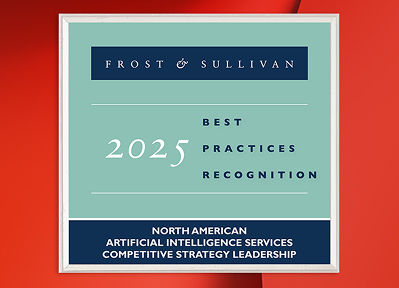The following is Part III of a three-part series.
Welcome to the final installment of a three-part series discussing the areas to take seriously when you want to drive business with analytics.
In Part I of this series, I discussed how to prioritize data accessibility and how to address the challenges that come with it. Those challenges include:
- Every department is driven by its own goals.
- Data architectures are simply getting very complex.
- Siloed, nonsynergistic architectures lead to encrypted data.
Part II discussed where the disconnect is and addressed how organizations can bridge the gap. While old data governance programs may have felt like too much bureaucracy, more current options use artificial intelligence (AI) and machine learning (ML) to quickly sort and categorize data, to comply with security policies and data privacy standards.
Here, in Part III, we’ll discuss designing with analytics in mind, to accelerate the organization’s analytic maturity journey.
Design With Analytics in Mind
What’s the whole reason for analytics? Really, its purpose is to support and enable strategic goals. All too often analytics is an afterthought and not understood as the backbone to strategic success. Organizations think, “We just need to make this product work … we’ll get to analytics and reporting later.” Time and time again this ends up costing the organization, slowing its time to insight to a turtle’s pace. Traditionally, the developer’s mindset is to build the products purely to enable the business processes with the fewest keystrokes possible. Then, when the data and analytics team finally gets access to the data supporting the business processes, it can be very difficult to decode and massage the data to illustrate what’s happening for monitoring purposes, much less to engage in advanced analytic use cases.
The solution? The most agile and effective analytics infrastructures are designed while the company’s products and solutions are being built. If you can, have your modern data and analytics team in the room while you’re designing and redesigning your products and business processes, or shaping digital transformation.
When Hitachi Vantara’s services unit was helping develop a new product for a large communications, media, entertainment and technology (CMET) client, our team promptly deployed a modern data and analytics subgroup to engage with product management and developers from each business unit. The teams worked closely to build strategy maps, outlining key goals for each unit. They ensured that the business process data was configured properly to monitor activity on launch day and enable advanced analytics to drive future strategic decisions. The result? In the first weeks of launch the client was able to identify and troubleshoot a major unforeseen and costly incident that affected a large percentage of revenue. The client investigated and resolved the leak in the business process pipeline. Additionally, the client quickly went from just monitoring activity to being able to apply advanced analytic modeling on usage datasets equaling millions of records per hour. While most companies are struggling in a decade’s long journey to get moving up the analytics maturity curve, this group did it less than a year after launch.
Many companies will not be afforded the luxury of having a ground-level analytics team involved from the inception of their products and services. This should not stop management and executives from considering analytics early and often. Hitachi is currently working with a Fortune 500 company in its information technology (IT) space. This large conglomerate is over 30 years old. So, as you can imagine, most of the processes and pipelines have been in place for a while. However, by integrating a modern data analytics team with the IT team, there have been endless opportunities to work directly with the developers as they are improving the services and as new initiatives are undertaken. As this company is pushing several digital transformation efforts and supporting new IT initiatives, Hitachi’s insights team has been able to help them quickly resolve data roadblocks and improve monitoring, one web service at a time.
If an organization hasn’t thought through how to analyze the data it is collecting, then it faces ongoing struggles to move up the maturity curve. By starting with analytics in mind, the data is formatted for analytics, so organizations can quickly progress from basic reporting to advanced, predictive analytics, using the large amounts of data collected.
Start Today
Where does your organization fall on the analytics maturity curve? How well is your data working for you? I invite you to learn more about how Hitachi Vantara can help you gain control of your data. Take the data modernization assessment now!
Miranda LeQuire is Senior Manager of Consulting Services at Hitachi Vantara.



